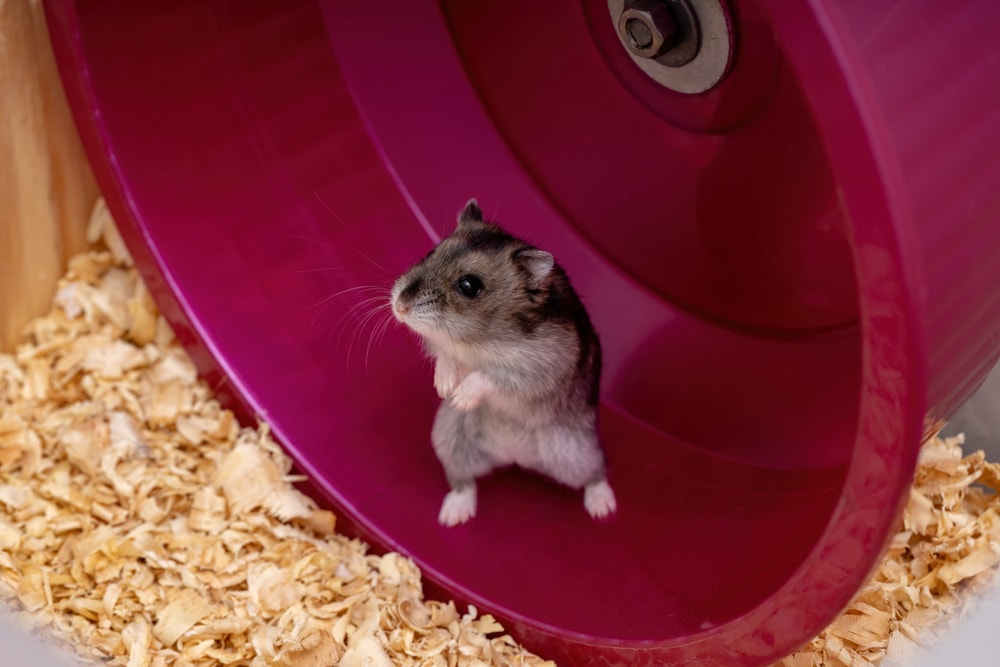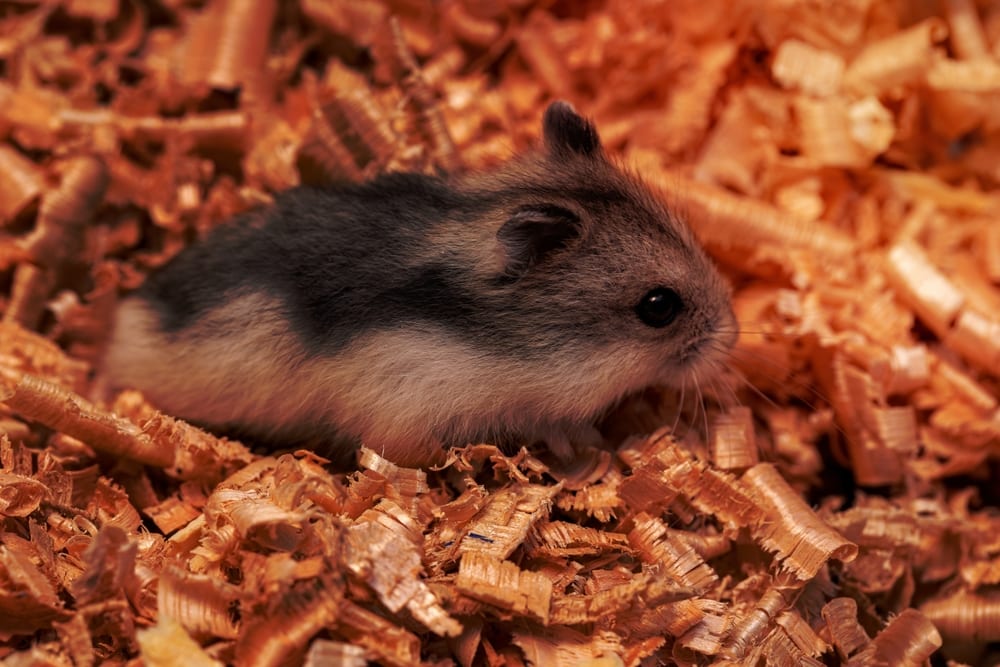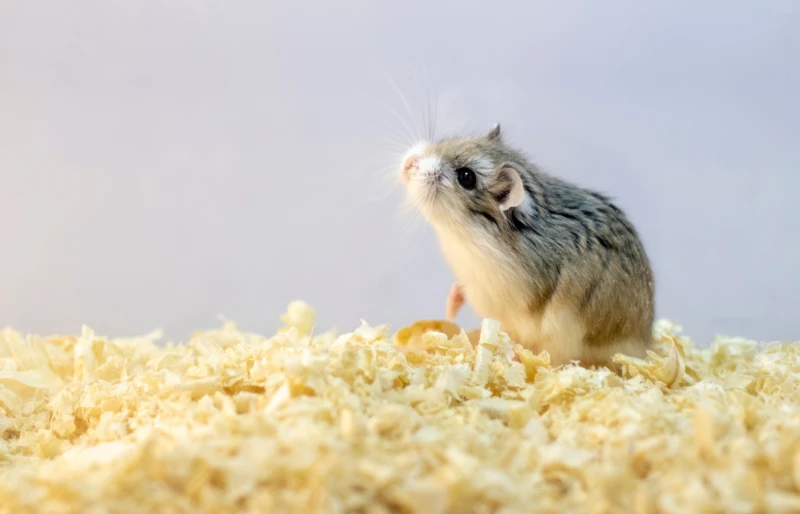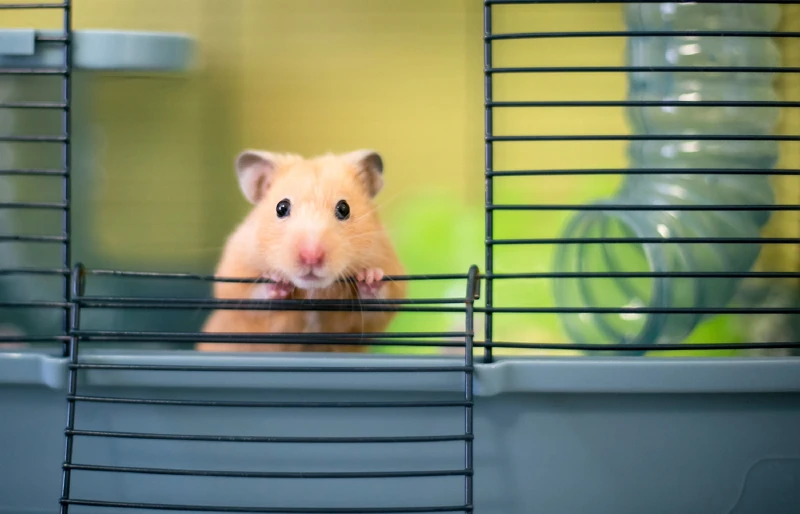Can Hamsters See in the Dark? Rodent Vision Explained (Vet-Approved)

By Misty Layne
Updated on

As the owner of a hamster, you know your tiny friend is nocturnal. After all, you probably are woken up at night by your pet running on their wheel or rustling about their cage. So, it stands to reason that hamsters can see in the dark, right?
Actually, that’s not entirely correct. Hamsters have poor eyesight. Their very acute sense of smell, touch and excellent hearing are what they use mostly to get around safely. Hamsters in the wild spend most of their time underground, and their eyes have adapted for low light conditions. They are very sensitive to bright sunlight and don’t see well in pitch darkness. How does that work exactly? Here’s how!
Why Hamsters Can’t See Well in the Dark
Did you know that all hamsters are born blind? And their eyesight doesn’t improve that much as they get older. Hamsters (and other nocturnal rodents) are extremely nearsighted, so they can typically only see a few inches in front of their face—at least when they’re in ideal lighting conditions.
The reason hamsters have such poor vision is because their retinas are rod-dominant. This means that instead of relying on the cones in the eye to absorb light and tell these rodents what they’re seeing, they rely on the rods to do this job. But cones are the part of the eye that is responsible for offering high-resolution (just for comparison, humans have retinas that are cone-dominant). And it isn’t only that hamsters rely on the rods in the eye to let them know what they’re seeing; these little guys also have fewer cones than humans do.
However, having more rods means that hamsters can better see in conditions with lower light, which is why the times when your hamster can see the best are dawn and dusk. Some light is required to see but not too much, as this will just hurt their eyes, which is why bright lamps shouldn’t be set near their cages! But they can’t see very well in the dark.
There are a couple of other downsides to having more rods than cones. For one, it’s difficult for hamsters to tell colors apart. For another, it’s harder for them to detect movement.

How Do Hamsters Get Around in the Dark?
If your hamster can’t see well in the dark, how does it move around its cage at night? Is your pet just stumbling blindly around until they hit what they’re searching for? They aren’t! Your hamster is able to get around in the dark by using their whiskers, ears, and nose.
Like many animals, hamsters have whiskers, which aren’t just there to make them look cute. Whiskers contain mechanoreceptors located at the base that detect touch. So, when your pet’s whiskers run against the side of their cage or hit their water bowl, they transmit a message to your hamster’s brain that tells your pet what they’ve touched and where the object is located in relation to themselves. In fact, rodents do something called “whisking,” where they swish their whiskers about so they can explore their surroundings and get to where they want to go.
But it isn’t only your hamster’s whiskers aiding them in moving about when they can’t see. Hamsters also have a keen sense of hearing! Not only can hamsters hear a wide range of frequencies, but they’re animals with extensive low-frequency hearing.
Finally, there’s your hamster’s sense of smell, which is acute. Have you ever wondered why your hamster sometimes randomly bites you when you pick them up? While it could be that you aren’t handling your pet gently enough, there’s also a good chance they smell something on you, like food or another animal. Your pet can recognize you by what you smell like, so smelling something that isn’t only you can make them protective, leading to a bite.
Your hamster has plenty of ways to navigate the dark without their eyesight.

Conclusion
Your hamster may keep you up at night with their activity, but being nocturnal doesn’t mean your hamster sees well in the dark. Hamsters have very poor vision, as they’re nearsighted, and they see best in very low light, such as when it’s dawn or dusk. Any other sort of lighting means they’ll have difficulty seeing very much.
But your hamster is perfectly capable of getting around at night without their eyesight. Thanks to your pet’s whiskers, hearing, and sense of smell, they can locate objects around them and navigate to where they want to go!
Featured Image Credit: Vinicius R. Souza, Shutterstock












